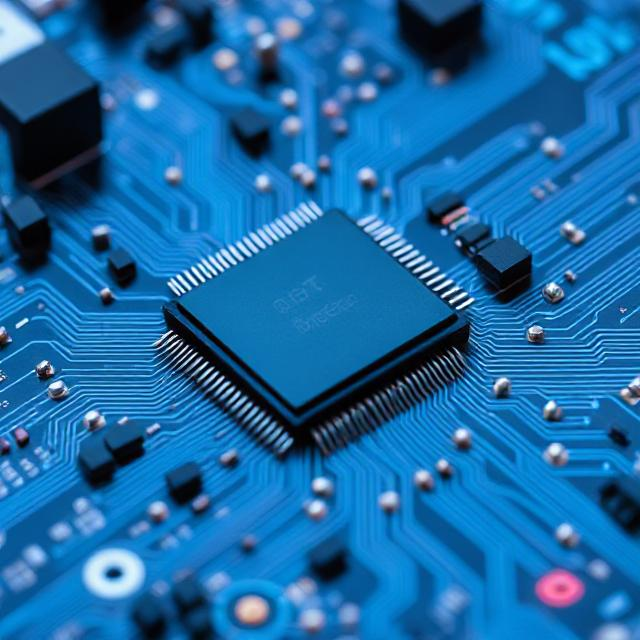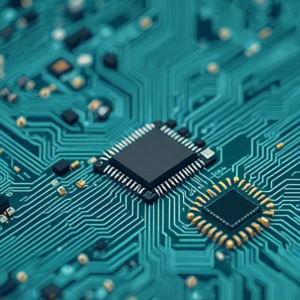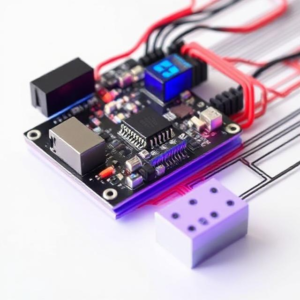Power Management in Microcontrollers: An Overview
Microcontrollers (MCUs) are the backbone of countless embedded systems and are found in everyday devices like home appliances, automotive systems, medical equipment, and IoT devices. These systems often need to operate with minimal power consumption to prolong battery life, reduce heat output, and improve overall system efficiency. Power management in microcontrollers is, therefore, a critical aspect of embedded system design, especially for applications requiring long-term, continuous operation on limited power sources like batteries.

This article explores the fundamental techniques of power management in microcontrollers, focusing on strategies to minimize power consumption while maintaining performance.
Understanding Power Consumption in Microcontrollers
The power consumption of a microcontroller depends on several factors, including the operating voltage, clock speed, and peripherals in use. Power is consumed whenever the MCU performs tasks, such as executing instructions, communicating with external devices, or activating internal peripherals. However, not all parts of the microcontroller are required to be active all the time. By managing which components are powered at any given time, we can optimize energy use.
Microcontrollers generally have multiple power modes that allow them to adapt to the varying demands of the application. These modes range from a fully active mode to deep sleep or shutdown states, where most of the internal components are turned off or put into a low-power state.
Key Techniques for Power Management
-
Dynamic Voltage and Frequency Scaling (DVFS)
One of the most effective ways to reduce power consumption is by adjusting the microcontroller’s operating voltage and clock frequency. DVFS is a technique that allows the MCU to operate at lower frequencies and voltages when the system’s demand is minimal. When the processing load is high, the system can scale up its frequency and voltage to meet performance needs.
This dynamic scaling helps to reduce the overall power consumption without compromising performance. MCUs with DVFS can adapt in real-time, balancing power and performance according to the needs of the application.
-
Power Modes (Sleep, Deep Sleep, and Shutdown)
Most modern microcontrollers come equipped with several low-power modes designed to reduce consumption when full processing power is unnecessary. These modes include:
-
Active Mode: All peripherals and the CPU are running at full speed. This mode consumes the most power.
-
Sleep Mode: In this mode, the CPU stops executing instructions but some peripherals, like timers and interrupts, may still function.
-
Deep Sleep Mode: The CPU and most peripherals are powered down, but the microcontroller can still retain essential data in memory and wake up quickly when needed.
-
Shutdown Mode: This is the lowest power state, where most of the system is turned off, and only essential components, like the watchdog timer or a low-frequency oscillator, remain active.
The MCU enters these modes when the system is idle or waiting for an event, helping to conserve power until it’s required to perform tasks again.
-
-
Peripheral Management
Microcontrollers often have a variety of built-in peripherals like timers, ADCs (Analog-to-Digital Converters), communication interfaces (UART, SPI, I2C), and more. These peripherals can be selectively turned on or off to minimize power usage.
-
Peripheral Clock Gating: Most microcontrollers allow individual peripherals to be disabled when not in use, reducing unnecessary power consumption.
-
Power Gating: This involves cutting off power to certain components of the MCU when they are not needed, such as the internal voltage regulator or certain I/O ports.
-
Adaptive Peripherals: Some MCUs can adjust the power settings of individual peripherals depending on workload. For example, a UART interface can work at low data rates to save energy, or the ADC can operate at a slower conversion rate.
-
-
Low Power Components and External Power Management
Using low-power components is another effective strategy. For instance, low-power voltage regulators and optimized communication modules can help reduce power consumption. Additionally, external power management ICs (PMICs) can be used to manage the system’s power delivery more efficiently. These PMICs regulate power distribution between the MCU and other components and can help the system transition between different power modes smoothly.
-
Software Optimizations
In addition to hardware techniques, software plays a significant role in power management. For example, an optimized program that minimizes the frequency of tasks can reduce the processing load and, in turn, power consumption. Software techniques also include implementing sleep modes during periods of inactivity and efficiently managing interrupts and system events to minimize wake-ups.
A well-designed firmware can reduce the demand on the microcontroller’s processor and peripherals, significantly improving overall energy efficiency.
Application of Power Management Techniques
-
Battery-Powered Devices
In applications where the device is powered by batteries (e.g., wearables, remote sensors, and IoT devices), every bit of energy saving is crucial to extend battery life. Using a combination of low-power modes, DVFS, and efficient peripheral management, microcontrollers can ensure the device operates for extended periods without needing a recharge or battery replacement.
-
Automotive and Industrial Systems
Power management is also critical in automotive and industrial systems, where components must operate continuously or under varying loads. Microcontrollers in these systems must maintain reliability while minimizing energy use to reduce heat output and increase overall system efficiency.
-
Medical Devices
In medical applications, power consumption is a key factor in the design of wearables, implants, and portable devices. These systems must not only be power-efficient but also reliable and accurate. Low-power microcontrollers with advanced sleep modes and efficient peripheral management ensure these devices can operate for long periods without the need for frequent recharging.
Conclusion
Power management is essential in optimizing the performance and efficiency of microcontroller-based systems, especially in battery-operated and portable devices. By utilizing techniques like dynamic voltage and frequency scaling, low-power modes, peripheral management, and software optimization, developers can significantly extend the battery life and improve the system’s overall efficiency. As microcontrollers become more integral to modern technology, understanding and implementing power management strategies will remain a critical aspect of embedded system design, ensuring longer operational lifespans and better resource utilization.











